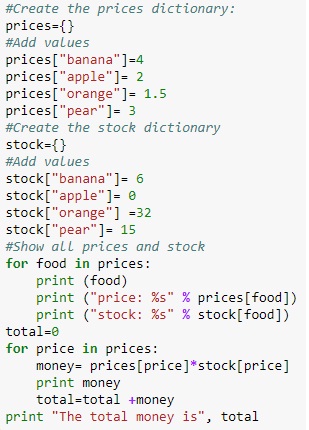


Python compare dictionaries and add values series#
In order to iterate over every item in a dictionary, as opposed to just the top-level keys, you will need to use a series of loops (or one recursive loop, as demonstrated below): def get_all_values(obj, level=0): We then set a key-value from dict2 mapping in merged if that key doesnt exist in merged or if the value is larger than the one stored in existing mapping. The above is equivalent to: for key, value in ems(): You can, of course, also have a list of dictionaries: results800m = [ Note that, in the indexing above, the is the key of a value in a dictionary and the is the position of an element in a list. Here’s an example of what the contents of a file like this might look like: # The 800m medal winners at the Tokyo 2020 Olympicsġ: ,Ģ: ,ģ: , This method finds the common keys and sums their values. They are listed here in alphabetical order. list.insert(i, x) Insert an item at a given position. Then, we assigned the two dictionaries and called the Counter() function on dict1 and dict2. Built-in Functions The Python interpreter has a number of functions and types built into it that are always available. list.extend(iterable) Extend the list by appending all the items from the iterable. Usually, these will appear in the form of JavaScript Object Notation (JSON) files which are, once imported into Python, essentially exactly this. Here are all of the methods of list objects: list.append(x) Add an item to the end of the list. Dictionaries containing a mix of both lists and dictionaries is a very common format for data to be stored in. The difference is quite substantial for large dictionaries If the two dictionaries are very different in size, it becomes important to use the smaller one in.


 0 kommentar(er)
0 kommentar(er)
